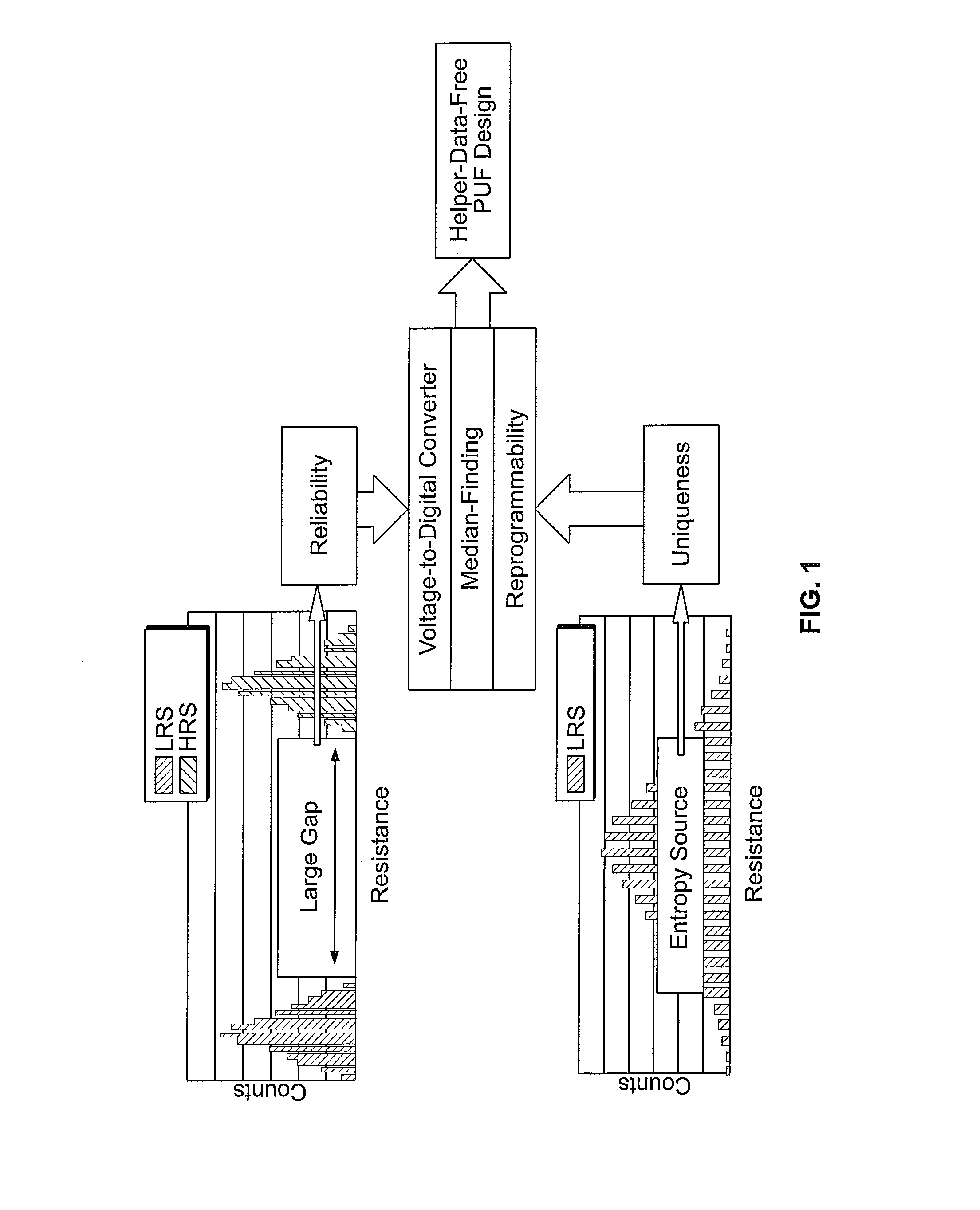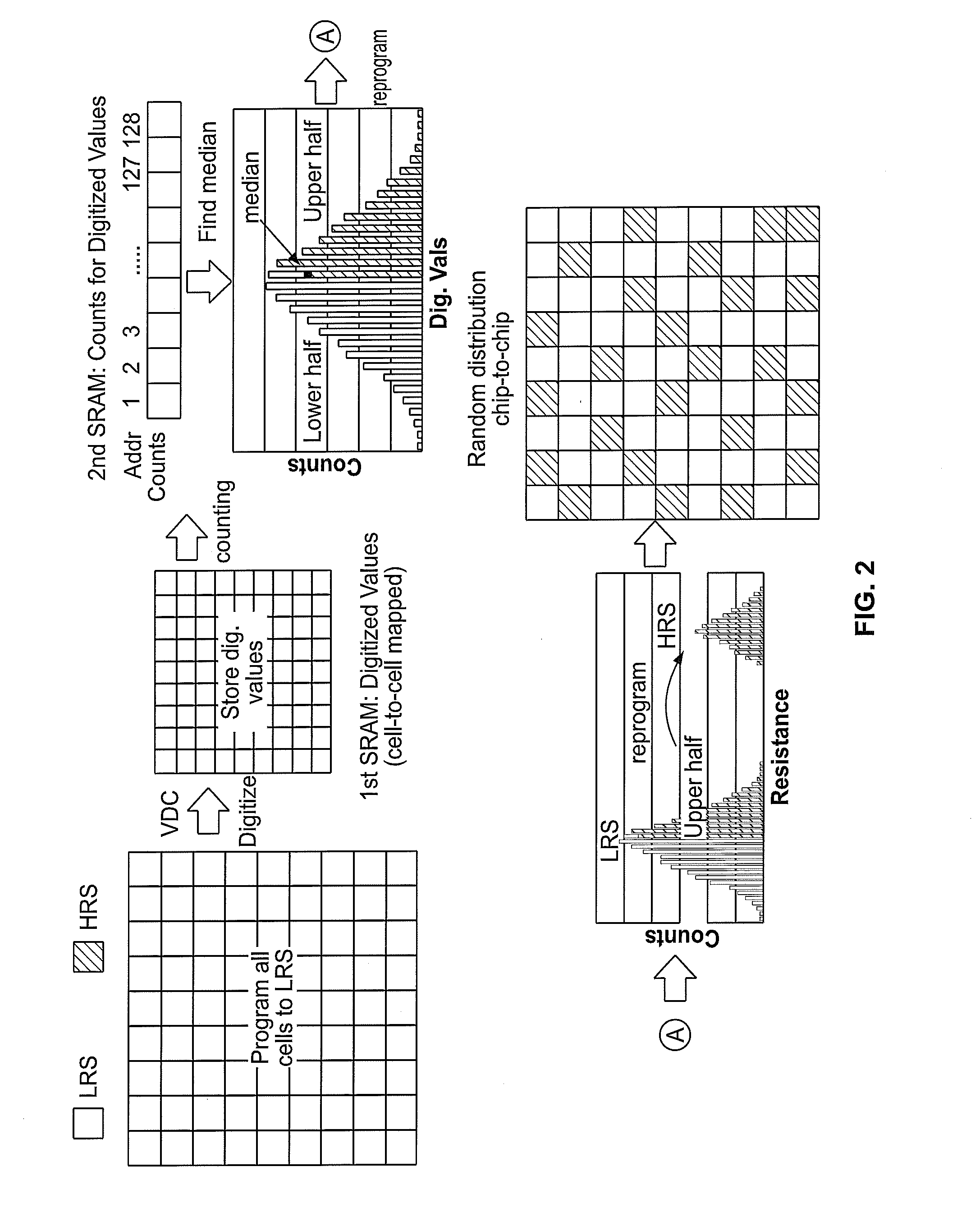Systems and methods for generating physically unclonable functions from non-volatile memory cells
a non-volatile memory and function technology, applied in the field of systems and methods for generating bitstrings, can solve the problems of further challenge to distinguishing subtle differences in the entropy source, and current pufs may be less than ideal for some security applications, and achieve high resistance state and stable entropy
- Summary
- Abstract
- Description
- Claims
- Application Information
AI Technical Summary
Benefits of technology
Problems solved by technology
Method used
Image
Examples
Embodiment Construction
[0026]Example PUFs may derive random, but reproducible bitstrings, from variations in the printed and implanted features of wires and transistors on an integrated circuit (IC). Each IC within a population may be uniquely characterized by random manufacturing variations, and therefore, the bitstrings generated by a PUF are unique from one chip to the next. For example, a PUF may measure a voltage or resistance difference between a pair of transistors in an IC. Manufacturing variations may cause the difference value to be different for each IC within a population. The difference value may be digitized to produce either a “1” or a “0” bit. An example PUF may generate a random unique bitstring by producing a sequence of “1” and “0” bits derived from transistor pair difference values.
[0027]PUFs can serve several important security applications including authentication and cryptography, which in turn can be used for anti-counterfeiting and detecting malicious system alterations in the fie...
PUM
 Login to View More
Login to View More Abstract
Description
Claims
Application Information
 Login to View More
Login to View More - R&D
- Intellectual Property
- Life Sciences
- Materials
- Tech Scout
- Unparalleled Data Quality
- Higher Quality Content
- 60% Fewer Hallucinations
Browse by: Latest US Patents, China's latest patents, Technical Efficacy Thesaurus, Application Domain, Technology Topic, Popular Technical Reports.
© 2025 PatSnap. All rights reserved.Legal|Privacy policy|Modern Slavery Act Transparency Statement|Sitemap|About US| Contact US: help@patsnap.com



